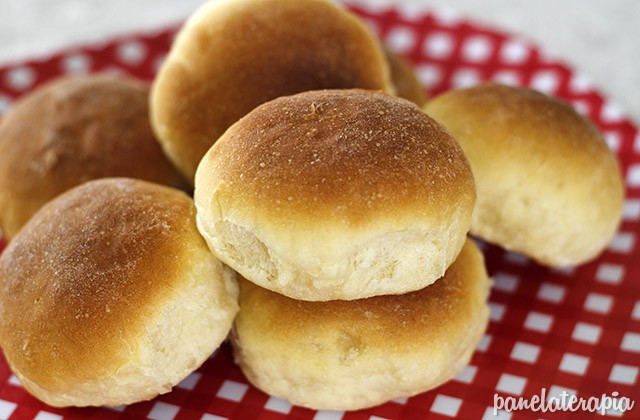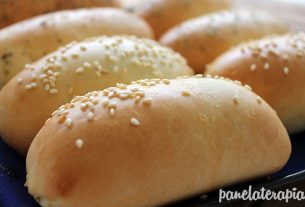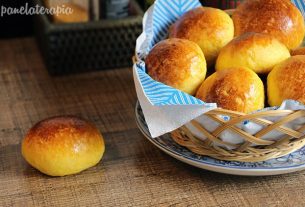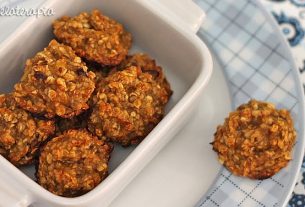Potato bread I didn’t have it here on the blog and you always asked me for it. I tested this revenue and I loved the result, but I had to make adjustments and it wasn’t the recipe’s fault, it’s just that potatoes are an ungrateful ingredient, because the amount of moisture in them varies a lot, which can mean you need more or less flour. The person who sent me the recipe was Maria Clara, a blog reader from Minas Gerais and this is her aunt’s recipe.
I’ll post here with my adaptations, but I’ll tell you that depending on the size of your egg yolks and how much moisture your potato has, you’ll need to use more flour (if the dough is sticky) or more milk, if it’s dry.
Ingredients:
1/2 tablespoon of salt;
1 tablespoon of sugar;
1 cup (240ml) mashed boiled potatoes (I used 2 medium English potatoes cooked in water);
3 tablespoons of melted butter (approximately 40g);
2 excited;
80 ml of warm milk;
5g instant dry yeast (1/2 packet);
Approximately 500g of wheat flour;
1 egg yolk for brushing (I forgot, but it browned anyway).
Comments:
– I cooked the potatoes in boiling water with the skin on to absorb less water, then mashed it with a fork, if you can, steam it to make it drier, or use pink-skinned potatoes for better results.
– Warm milk is not too hot milk, ok?
– If you have questions about the type of yeast used in this recipe, click here http://bit.ly/1PV4cvM
Preparation Mode:
As this dough is softer, the ideal is to do the first step in a basin or deep vessel. Mix the milk, butter, egg yolks and mashed potato (which must be at room temperature). Add the remaining dry ingredients, leaving the flour last. Add flour little by little and mix. It should still be a sticky dough, if you try to create a dough that doesn’t stick to your hands you will use a lot of flour and the bread will be hard. At this stage, you don’t need to knead, just mix everything.
Cover the container with a cloth or plastic film and let the dough rise in a warm place for 1 hour or until it doubles in volume (if you live in a cold region it can take up to two hours).
Put some flour on a counter and pour the dough. As it will be sticky, sprinkle flour on top and knead for about 10 minutes. I used another 1/2 cup of flour in this step. Make balls and place them on the baking tray (I always used flour on my hands because the dough remained a bit sticky towards the end). Let it rise for 30 minutes. You can also make larger loaves or use an English cake pan and place the dough inside.
I like to turn the oven on at 200ºC for 15 seconds (it’s just seconds), turn it off and then place the baking tray with the bread inside to rise. With the breads risen (after half an hour), I remove the baking tray from the oven, turn it back on to 180ºC, let it preheat for 5 minutes and return the breads to the oven to bake.
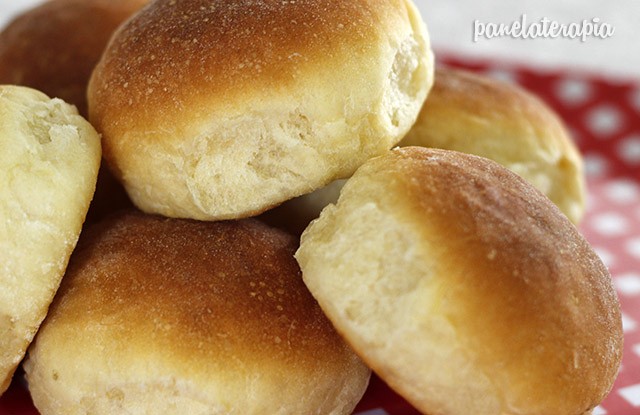
That’s how I made them and they turned out delicious and fluffy. But I confess that it is a longer recipe that makes me a little lazy. Next time I will use the bread maker.
I know there are few photos in the post, but I promise that the next time I test this bread I will add more photos.
Click to vote on this post!

Sign up for our newsletter and stay up to date with exclusive news
that can transform your routine!
Warning: Undefined array key "title" in /home/storelat/public_html/wp-content/plugins/link-whisper-premium/templates/frontend/related-posts.php on line 12
Warning: Undefined array key "title_tag" in /home/storelat/public_html/wp-content/plugins/link-whisper-premium/templates/frontend/related-posts.php on line 13

